Process : Architecture No 30, Playgrounds, Tokyo, 1982
„Play well and learn well“ (Japanese saying)
This issue of Process : Architecture provides a wide range of examples of children’s playgrounds, architecture for children and articles on the play issue with a focus on Japan and the design of Mitsuru Senda. Other playground designers presented here: Eric McMillan (Sesame Place, Philadelphia), Richard Dattner (the various playgrounds in NY, Riverfront Park, Florida), Engelbert Kremser (Berlin), René Haubensak (Zurich).
An other section of the book displays plans of 54 playgrounds throughout the world and classifies them into four types. The types are:
– natural playgrounds, which make the most of existing features
– natural playgrounds, which combine existing features with man-made ones
– playgrounds, which have been made on a previously developed site
– purpose built playgrounds
Besides abundant illustrations this issue of Process Architecture features three articles:
Isami Kinoshita (*1954, architect and urban planner) gives an overview of the history of playgrounds in Europe. Mitsuru Senda writes on „community“ play equipments and Yoshiyasu Ishii (*1931, designer NIDO) writes on children’s toys and equipments.
erstellt: 10/2/2012
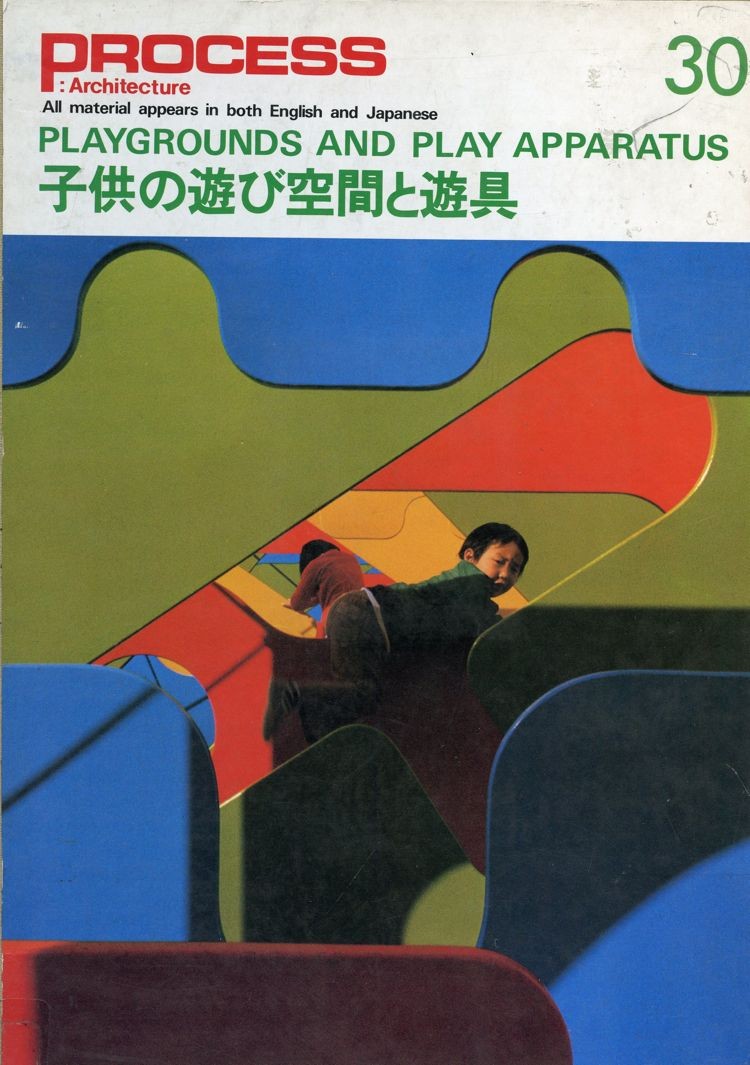
Front cover Process Architecture 30 playground Kanagawa Pref. Japan
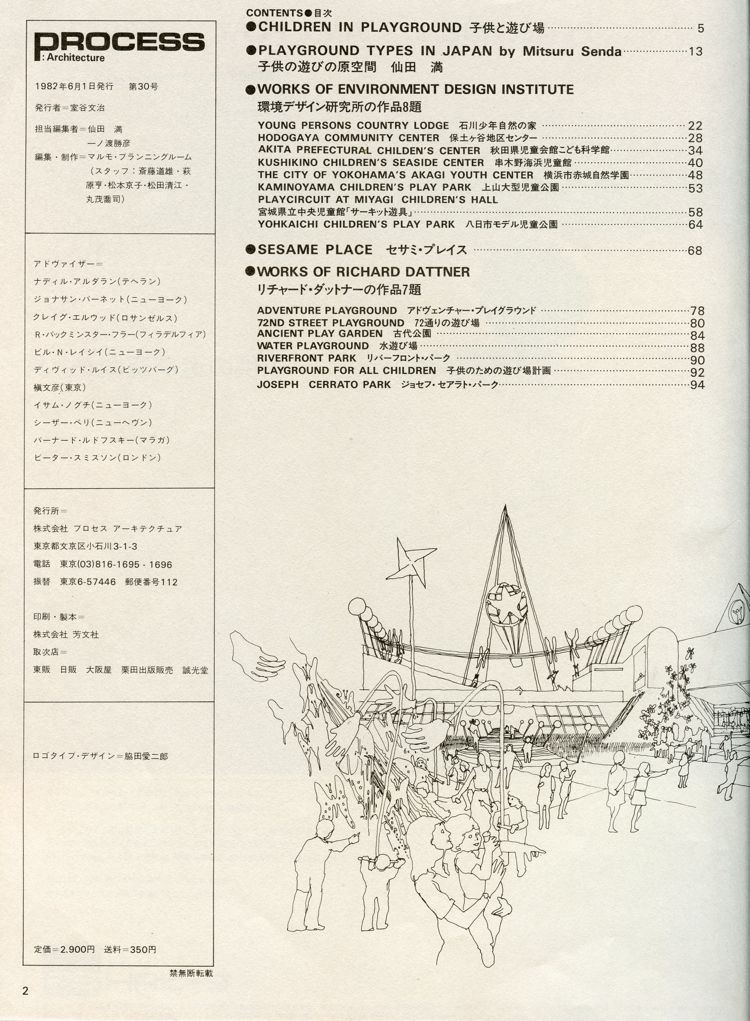

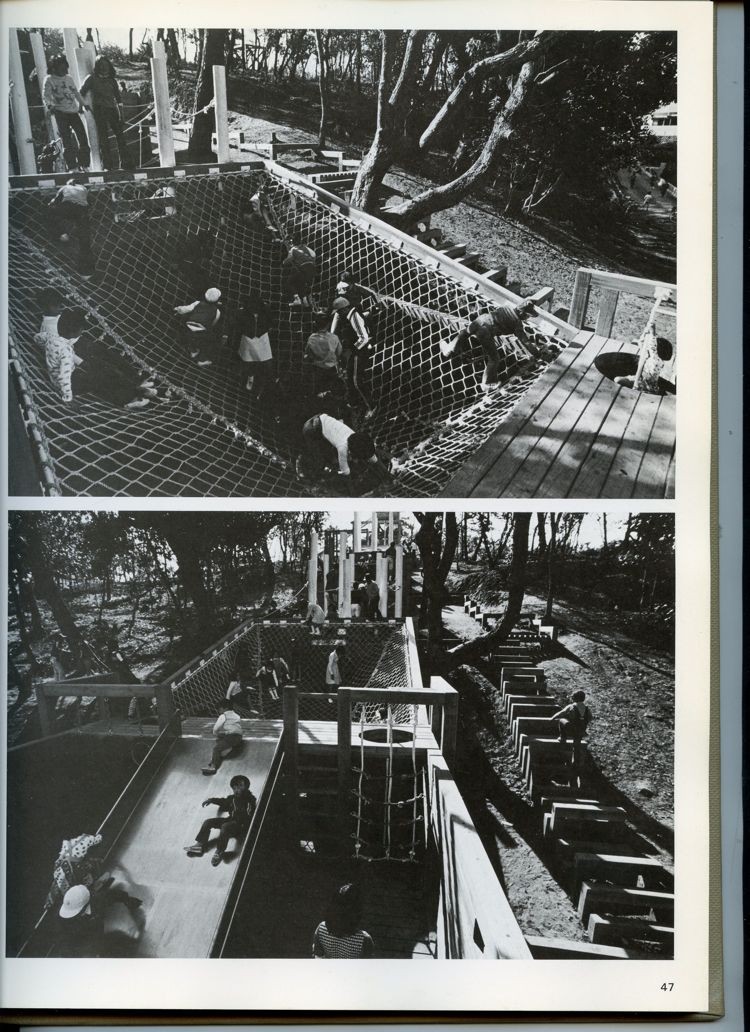
Environment Design Institute, 1977 Kushikino children’s seaside center
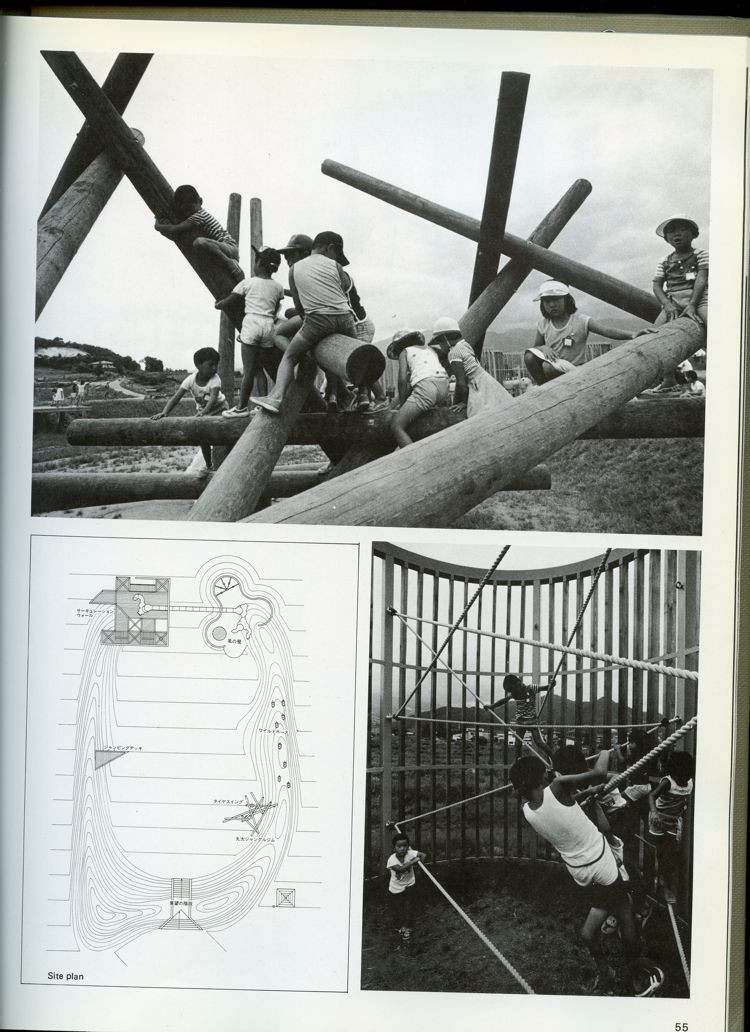
Environment Design Institute Kaminoyama children’s play park

Environment Design Institute, 1975 Yohkaichi children’s play park
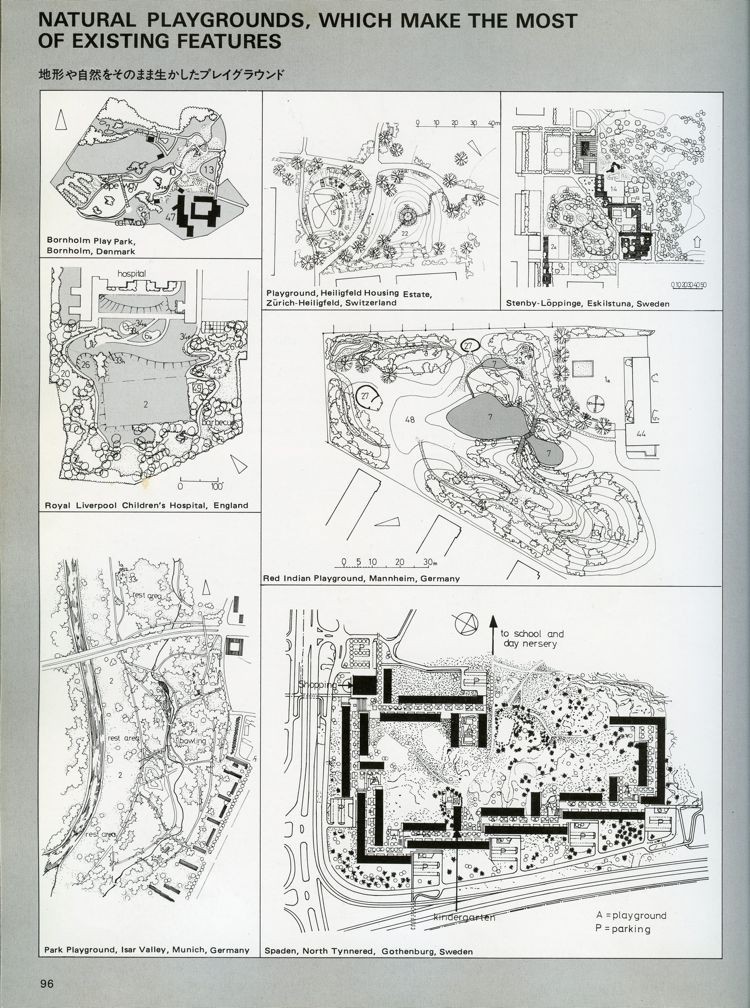
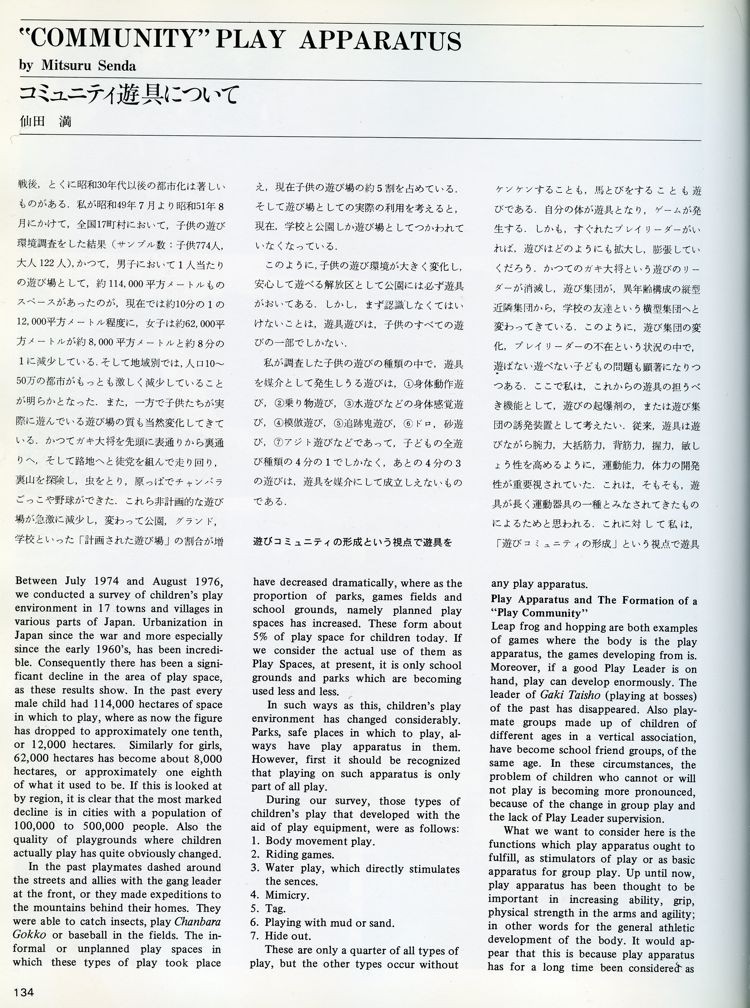

Mitsuru Senda Community play equipment

Contrast and Harmony Apparatus, Klagenfurt